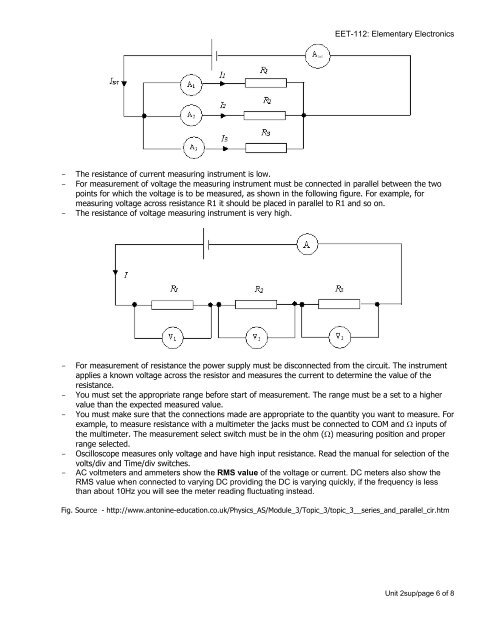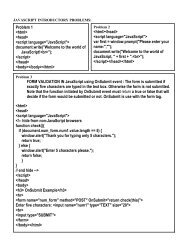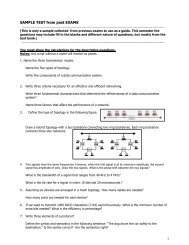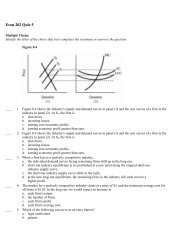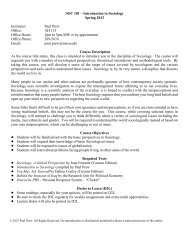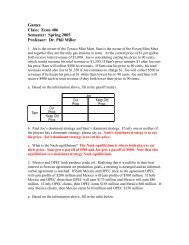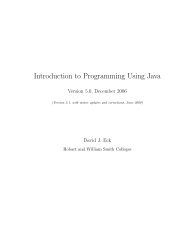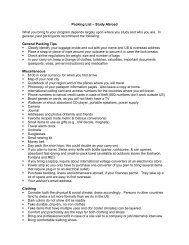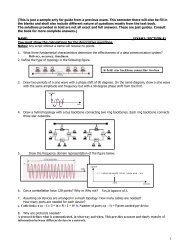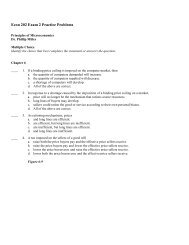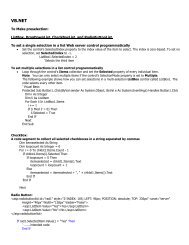Figure 2. Equivalent circuit of figure 1 if RE= R1+R2+R3 ... - Krypton
Figure 2. Equivalent circuit of figure 1 if RE= R1+R2+R3 ... - Krypton
Figure 2. Equivalent circuit of figure 1 if RE= R1+R2+R3 ... - Krypton
Create successful ePaper yourself
Turn your PDF publications into a flip-book with our unique Google optimized e-Paper software.
EET-112: Elementary Electronics<br />
- The resistance <strong>of</strong> current measuring instrument is low.<br />
- For measurement <strong>of</strong> voltage the measuring instrument must be connected in parallel between the two<br />
points for which the voltage is to be measured, as shown in the following <strong>figure</strong>. For example, for<br />
measuring voltage across resistance R1 it should be placed in parallel to R1 and so on.<br />
- The resistance <strong>of</strong> voltage measuring instrument is very high.<br />
- For measurement <strong>of</strong> resistance the power supply must be disconnected from the <strong>circuit</strong>. The instrument<br />
applies a known voltage across the resistor and measures the current to determine the value <strong>of</strong> the<br />
resistance.<br />
- You must set the appropriate range before start <strong>of</strong> measurement. The range must be a set to a higher<br />
value than the expected measured value.<br />
- You must make sure that the connections made are appropriate to the quantity you want to measure. For<br />
example, to measure resistance with a multimeter the jacks must be connected to COM and Ω inputs <strong>of</strong><br />
the multimeter. The measurement select switch must be in the ohm (Ω) measuring position and proper<br />
range selected.<br />
- Oscilloscope measures only voltage and have high input resistance. Read the manual for selection <strong>of</strong> the<br />
volts/div and Time/div switches.<br />
- AC voltmeters and ammeters show the RMS value <strong>of</strong> the voltage or current. DC meters also show the<br />
RMS value when connected to varying DC providing the DC is varying quickly, <strong>if</strong> the frequency is less<br />
than about 10Hz you will see the meter reading fluctuating instead.<br />
Fig. Source - http://www.antonine-education.co.uk/Physics_AS/Module_3/Topic_3/topic_3__series_and_parallel_cir.htm<br />
Unit 2sup/page 6 <strong>of</strong> 8


